Presented by

This content is made possible by our sponsor. It is not written by and does not necessarily reflect the views of the editorial staff.

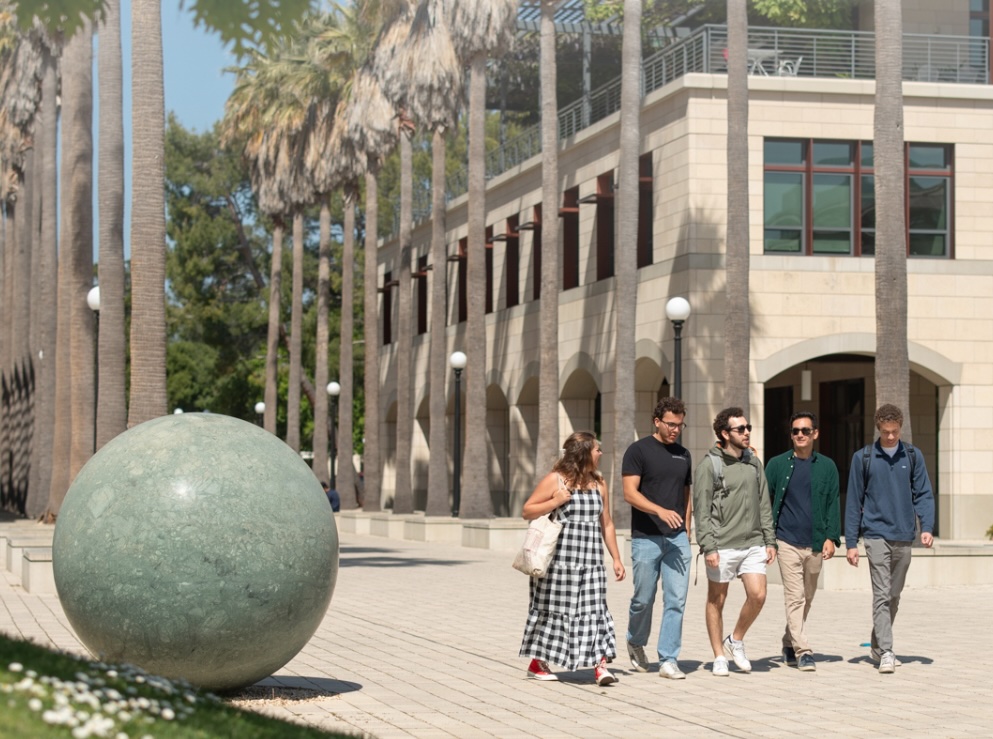
12 Stanford campus art walks to take this summer
From formal tours to serendipitous sightings, there are plenty of ways to engage with the public artworks on Stanford’s grounds.
Stanford’s public art program includes more than 80 works of art created in the 19th, 20th, and 21st centuries that reflect the history, spirit, and dynamism of life on campus.
From Ursula von Rydingsvard’s monumental bronze MOCNA (2018) at Denning House to whimsical bike racks styled by David Byrne (2016) along Lomita Drive to Sam Van Aken’s Tree of 40 Fruit (2019) growing next to the Rodin Sculpture Garden, all are accessible to the public 365 days a year.
For an interactive map of public art across campus, download the Stanford Mobile App.
Wander around campus
If you prefer to leave your wayfinding tools behind and walk the grounds enjoying chance encounters with artworks, consider starting out in one of these four spots.

Arboretum
In the vast arboretum, you’ll find Angel of Grief (1900-01) carved by the Bernieri Brother of Tuscany and Beverly Pepper’s The Stanford Columns (2022), standing among the California oaks across Lomita Drive from the Anderson Collection.
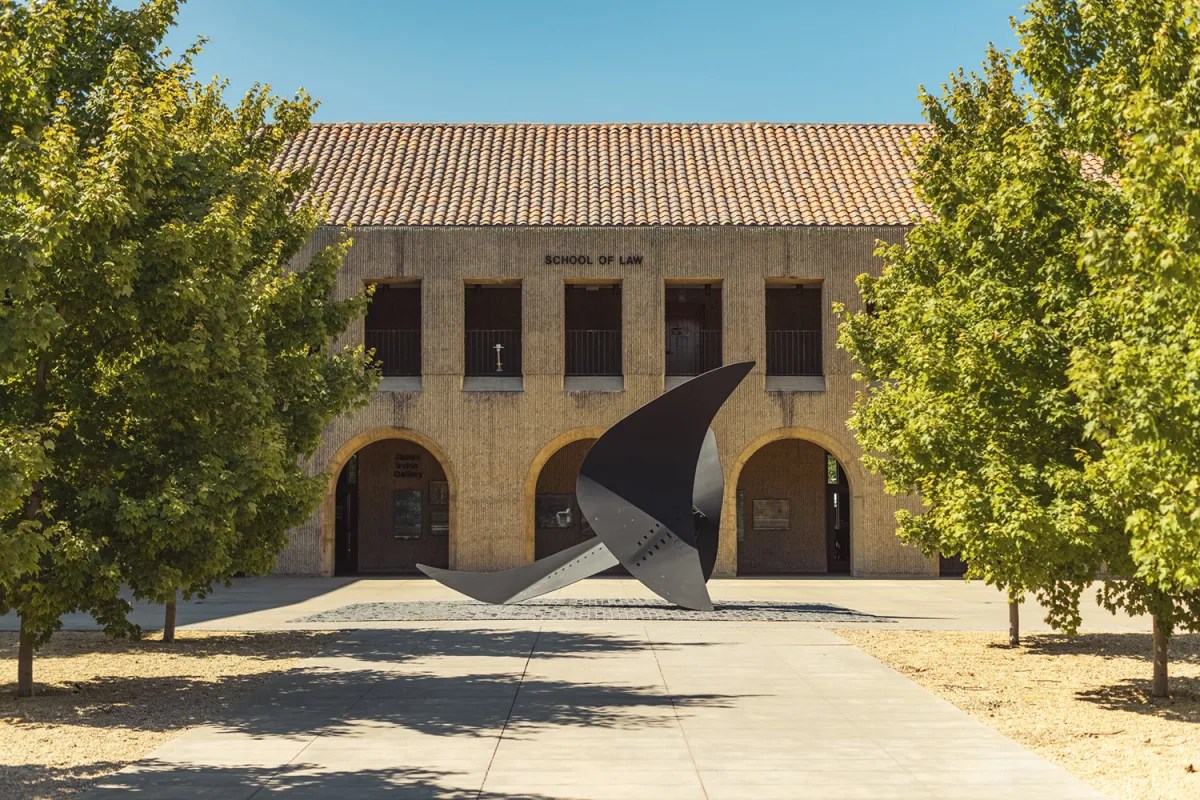
Canfield Court
Deeper into the center of campus, between Stanford Law School and Green Library, are half a dozen artworks around walkable Canfield Court, including Alexander Calder’s The Falcon (1963) and Don Yeomans’ carved totem pole The Stanford Legacy (2002) dedicated to the university’s founders.
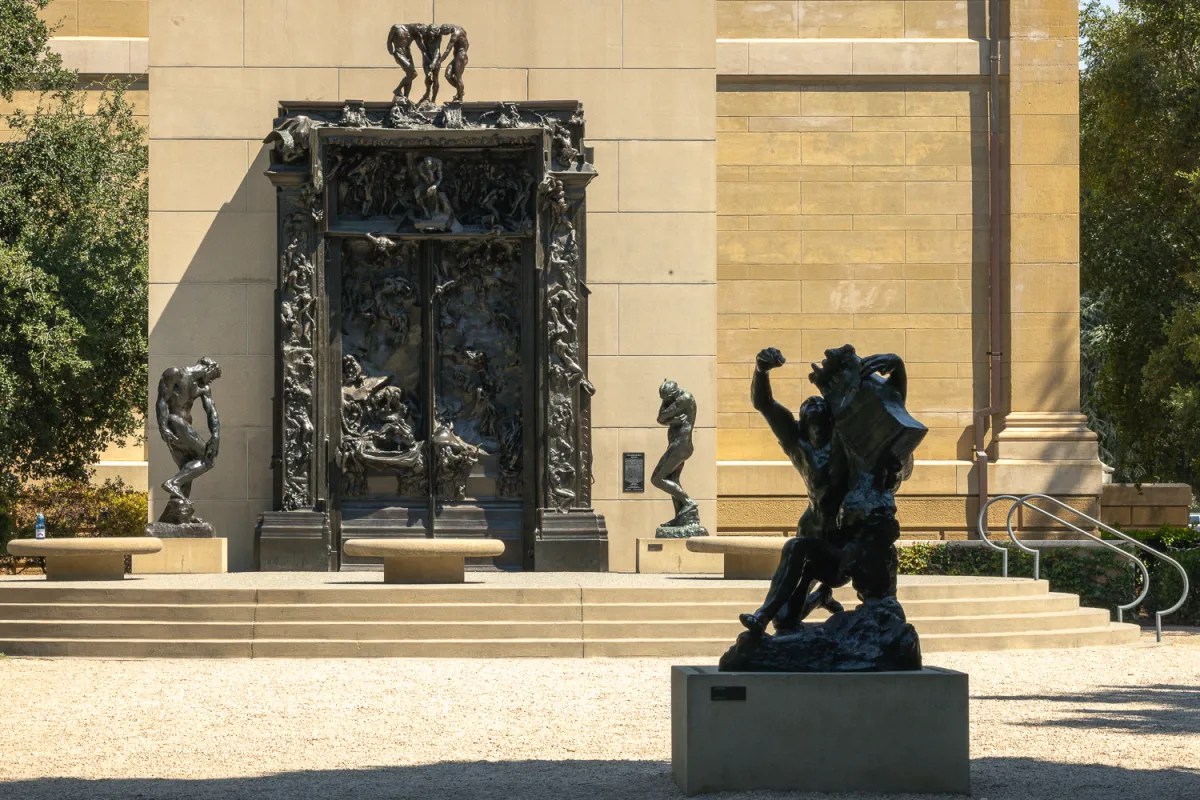
Rodin Sculpture Garden
Within a single acre of cypress trees and gravel paths next to the Cantor Arts Center is the Rodin Sculpture Garden, modeled after the Bagatelle Gardens in Paris. Stanford’s garden comprises 20 monumental bronzes that include many of Rodin’s most famous sculptures created in the late 19th and early 20th centuries, including The Walking Man, two heads of the Burghers of Calais (the life-size Burghers are in Memorial Court in front of the Main Quad), Adam, Eve, and The Three Shades. Visually anchoring the garden at its eastern end is The Gates of Hell, a massive work cast by the Coubertin Foundry in 1981 using the lost-wax process favored by Rodin.
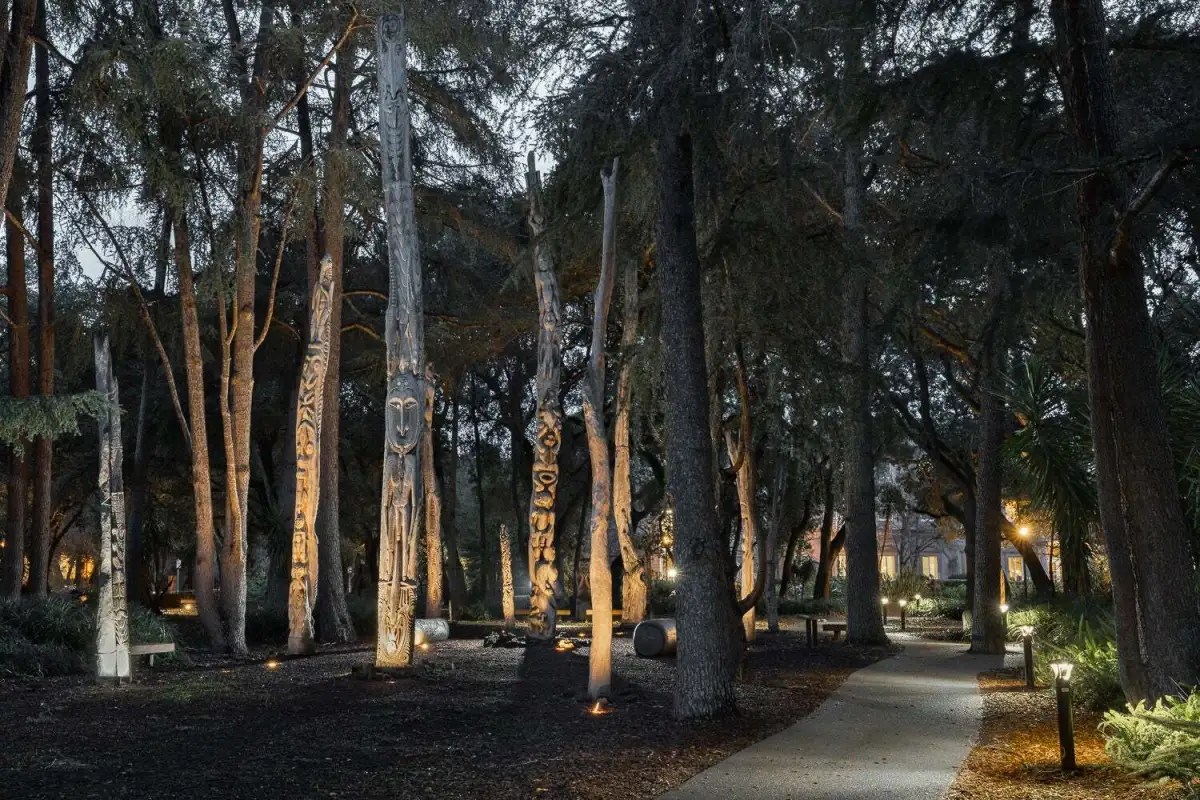
Papua New Guinea Sculpture Garden
A 15-minute walk due south of the Rodins, through the center of campus, puts you in the leafy center of the Papua New Guinea Sculpture Garden at the corner of Santa Teresa Street and Lomita Drive. Thirty years ago, 10 artists-in-residence from the Sepik River region of Papua New Guinea were invited to Stanford to reinterpret their artistic and design perspectives within the new context of a Western public art environment. The artists produced 40 carved posts, freestanding individual figures, garamut slit drums, and other large-scale site-specific artworks. Improved lighting and new smooth, flat walking paths easily accessed off the street sidewalk make this oasis easy to navigate year-round.
Take a self-guided tour
The Stanford Mobile app offers six thematic public art walks, each with four to 10 stops, map details, and information about the artwork.
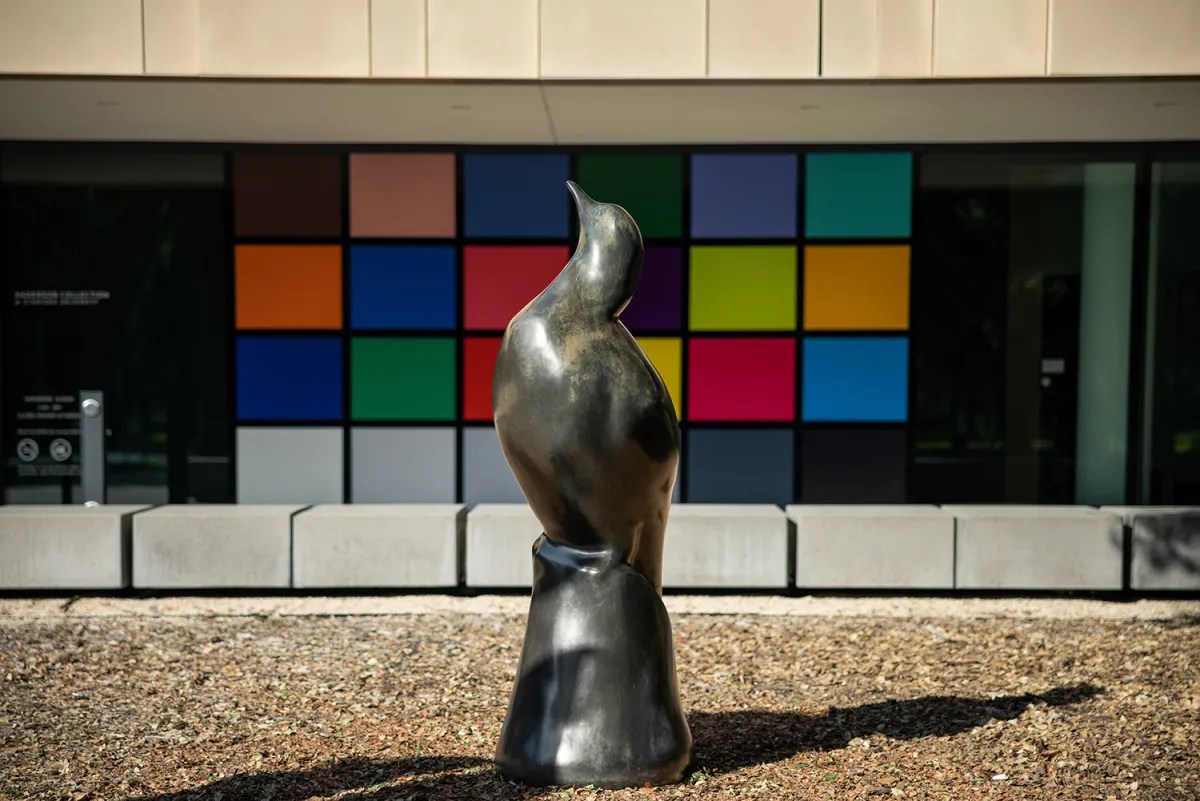
The Lost Bird Project by Todd McGrain is an ode to vanished times and vanished species. See five oversized bronze North American birds that are now extinct cast in 2018 and temporarily installed throughout the arts district. The last chance to see the birds is Sept. 3, 2024.
Around the museums highlights six works of art installed near the Anderson Collection and the Cantor Arts Center, plus the extensive Rodin Sculpture Garden.
Muralism + activism stops underscore how murals are a unique form of community engagement and ways of creating shared history and furthering social justice movements.
Sculptural landscapes take the viewer through four sculptures that invite reflection on the dynamic relationships between site, scale, and the body.
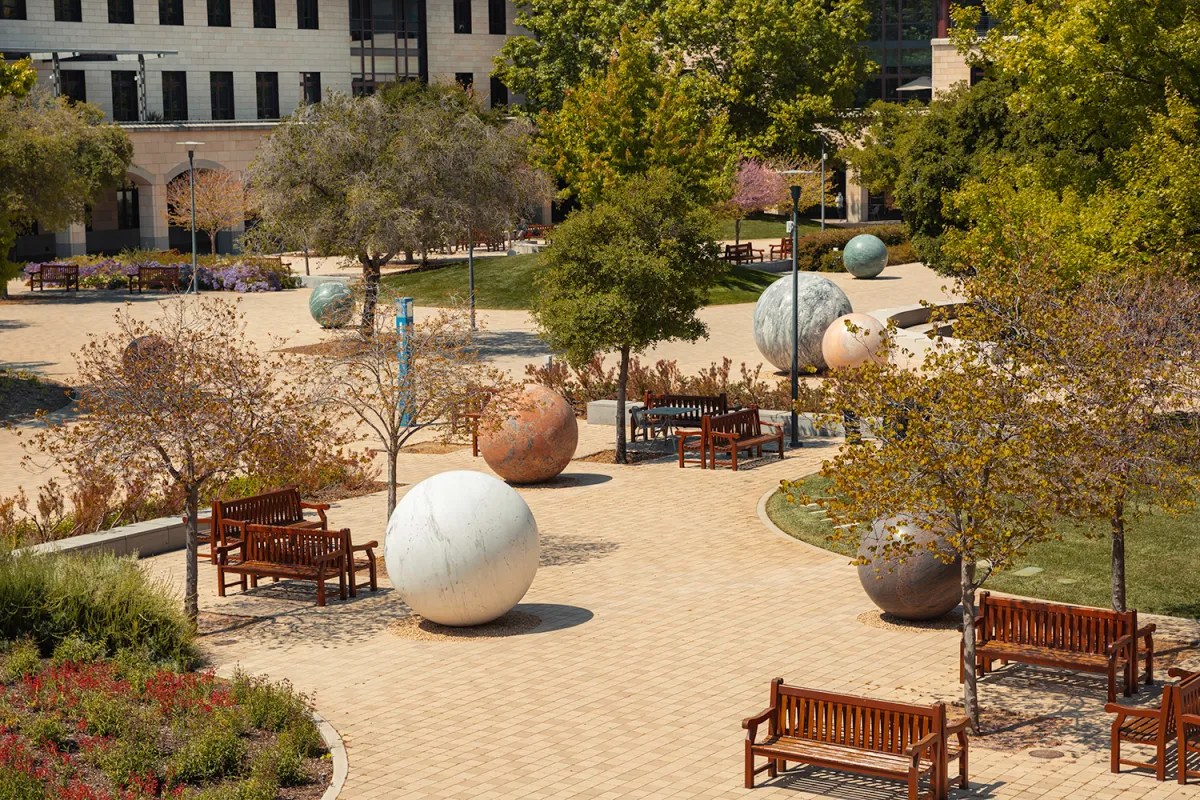
Art + science features artwork in dialogue with scientific research and discovery, such as Alicja Kwade’s Pars pro Toto (2021), installed throughout the Science and Engineering Quad, and Kenneth Snelson’s Mozart I (1982) on the lawn outside the Packard Electrical Engineering Building. While Kwade’s work is a cosmological scattering of stone spheres, Snelson’s stainless steel structure is a unified, interdependent system in space.
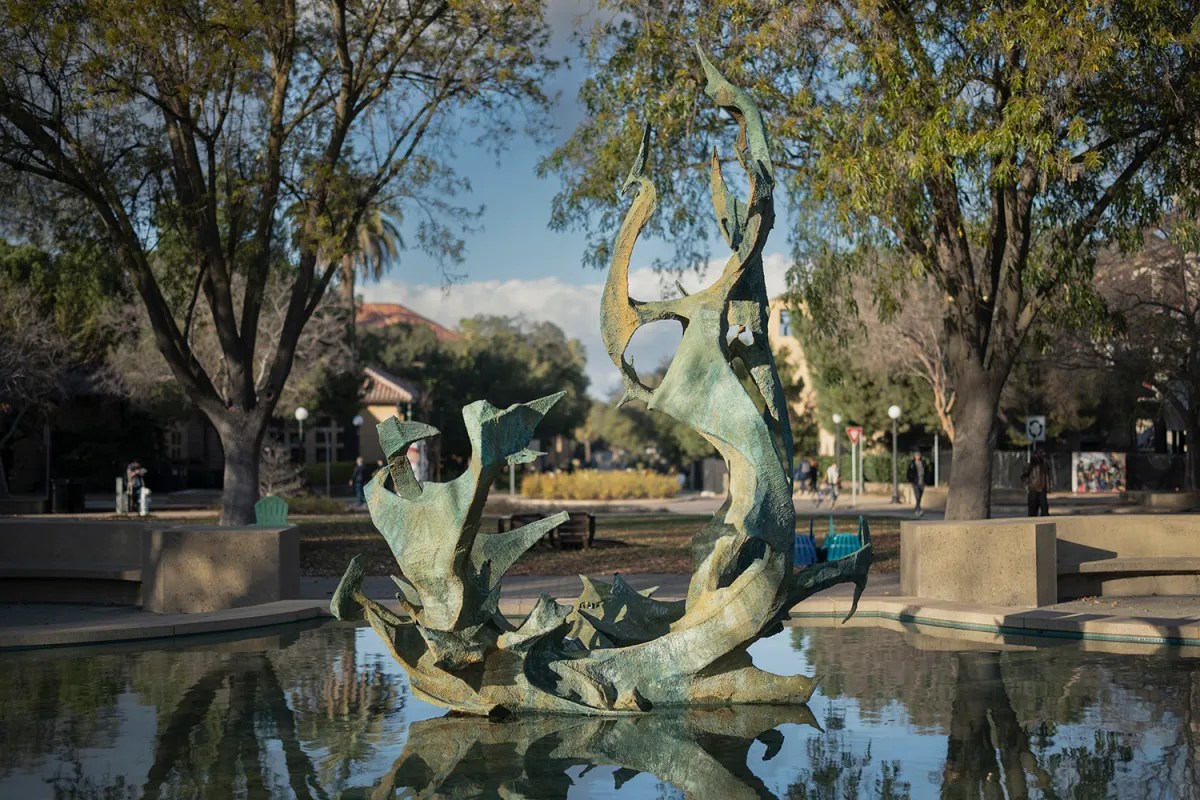
The BeWell art tour is a 10-stop, 15-30 minute, wheelchair-accessible loop through the center of campus where there is a concentration of artwork, including Vanguard (1980) by Oakland sculptor Bruce Beasley in Canfield Court and two signature campus fountains: Shumway Fountain (1980) by James Reeves at Green Library’s east wing entrance and Aristides Demetrois’ White Memorial Fountain, a.k.a. The Claw, in White Plaza. This fall, watch for a new work by Alia Farid titled Amulets to replace Xu Zhen’s temporary installation of Hello on this tour.
Take a public tour
The Cantor’s museum engagement guides lead three free public art tours across campus. Be sure to check the Cantor website for dates and times.
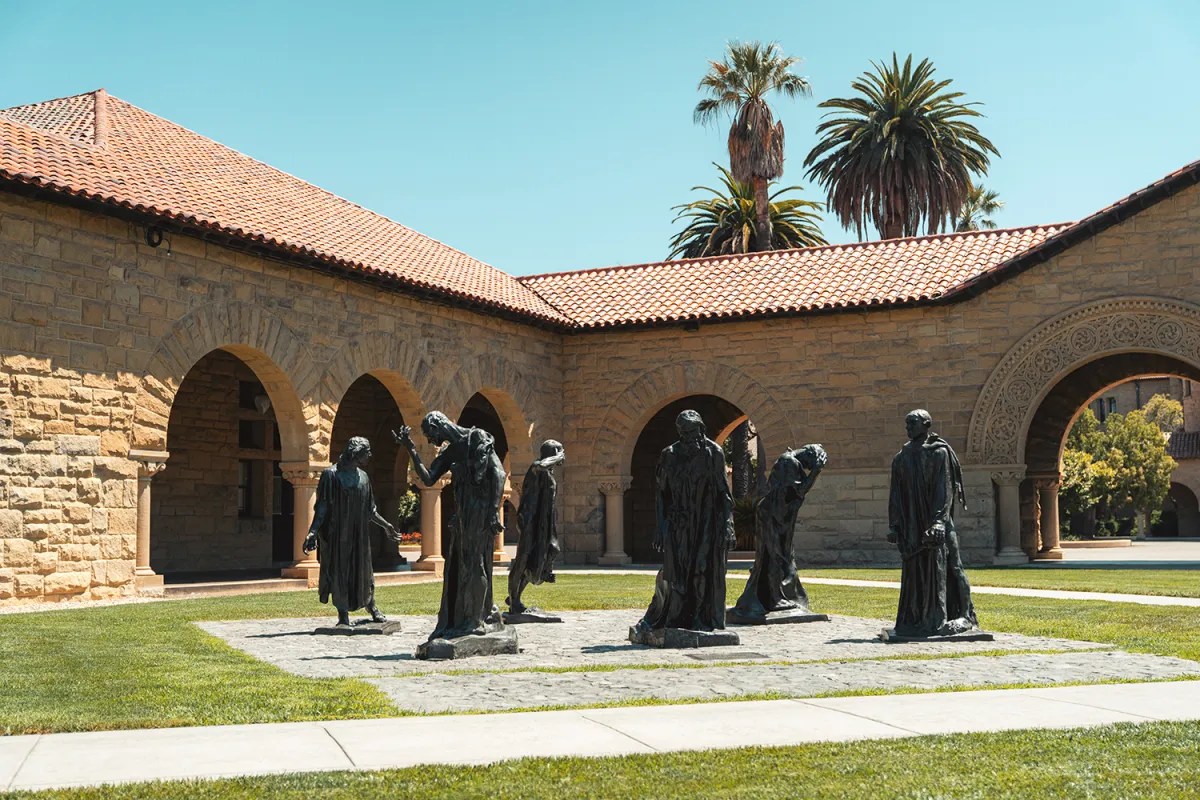
A 90-minute campus outdoor sculpture walk on the first and fourth Sunday of the month begins at the top of the Oval and covers the extensive collection of outdoor artworks in Stanford’s Quad and south campus.
A shorter outdoor sculpture walk on the second and third Sunday of the month begins in the Cantor’s lobby and features artworks surrounding the museum.
A walking tour of the Papua New Guinea Sculpture Garden is offered on the fourth Sunday of the month.
Stanford is committed to supporting our community by advancing interdisciplinary teaching and research, providing world-class medical care, and extending knowledge and discovery to our neighbors. Stanford invites its neighbors to enjoy its open lands and participate in learning, athletic, and arts events on campus.
